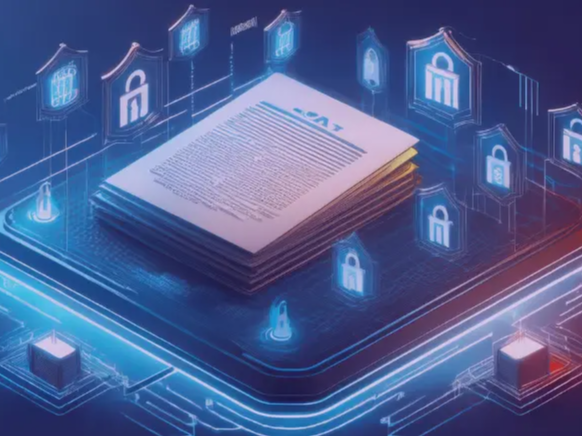Semantic Understanding is an important field in Natural Language Processing (NLP), which involves the process of extracting meaning and information from text data. Semantic understanding aims to understand and interpret the intrinsic meaning of text, not just a simple understanding of words or phrases, but to deeply explore the context, relationship, intention and sentiment of the text. Semantic understanding plays a key role in NLP and provides a foundation for more advanced natural language processing tasks, such as question-answering systems, sentiment analysis, summary generation and machine translation. Semantic understanding technology includes word sense disambiguation, syntactic analysis, semantic role labeling and other aspects. These technologies can help computers better understand the meaning and contextual information of human language, thereby achieving more intelligent natural language interaction.
What is Semantic Understanding?
Semantic Understanding is an important field in Natural Language Processing (NLP), focusing on understanding and interpreting the meaning of words, phrases and sentences in text. It involves literal meaning, as well as the analysis of multiple levels of information such as context, implicit meaning and speaker intention. Through semantic understanding, computers can process language more accurately and achieve more meaningful interactions, such as in chatbots, virtual assistants, and language translation. In short, semantic understanding enables machines to deeply grasp the true intentions and emotions of human language, thereby providing more intelligent and personalized services.
How semantic understanding works
Semantic understanding first needs to determine the correct meaning of polysemous words in a specific context, for example, "bank" can mean "bank" or "river bank". Analyze the relationship between words, understand the structure of sentences, and reveal the semantic connection between sentence components by building dependency trees. Identify the relationship between the predicate in a sentence and its related noun phrases, such as the agent and patient of an action. Identify and link words in the text that refer to the same entity, and solve the coherence of the text and the relationship between entities. Convert sentences into concepts or entities, and map natural language expressions to more abstract semantic representations. Capture the structure and function of language through a combination of entities, relationships, and attributes to enhance the system's understanding ability. Through deep learning and pre-trained models, such as BERT, GPT, etc., pre-trained on a large amount of text data, learn rich language patterns and semantic information. Considering factors such as conversation history, user intent, and cultural background, the meaning of language is accurately understood. Together, these enable computers to deeply understand the true intent and emotions of human language and achieve more intelligent natural language interaction.
Main applications of semantic understanding
Question-answering system: Understand user questions through semantic analysis to provide accurate answers.
Recommendation system: Analyze the semantics of user input and provide personalized recommendations for them.
Sentiment analysis: Identify user sentiment in product reviews and social media for market analysis and discussion monitoring.
Machine translation: During the translation process, accurately understand the semantics of the source language to generate more natural translations.
Dialogue system: To achieve intelligent conversational robots, it is necessary to deeply understand the user's intent and needs.
Challenges faced by semantic understanding
Semantic ambiguity: refers to polysemous words or polysemous expressions in language, which is very common in natural language. For example, "bank" can mean both "river bank" and "bank". The semantic understanding system needs to accurately identify and parse the correct meaning of these polysemous words in a specific context.
Context dependency: Natural language understanding relies heavily on contextual information. Semantic understanding systems must be able to capture and utilize contextual information such as conversation history, user intent, and cultural background.
Multilingual and cross-lingual understanding: With the deepening of globalization, semantic understanding in a multilingual environment has become increasingly important. The system needs to be able to handle semantic conversion and understanding between different languages.
Integration of knowledge graphs and external knowledge: In order to improve the accuracy and depth of semantic understanding, the system needs to be able to integrate and utilize external knowledge resources such as knowledge graphs. Knowledge graphs capture the structure and function of language through a combination of entities, relationships, and attributes, which can enhance the system's understanding ability.
Data scarcity and quality: For some fields and languages, high-quality training data is still scarce. The quality of data directly affects the performance of the model.
Understanding of long texts and complex structures: Understanding long texts and complex structures (such as tables, lists, etc.) is another challenge for semantic understanding. These texts often contain rich information and complex semantic relationships. The system needs to be able to effectively process and understand these complex structures, extract key information, and understand their deep meaning.
Real-time and efficiency: In many application scenarios, such as real-time dialogue systems and online question-answering, there are high requirements for the real-time and efficiency of semantic understanding systems. The system needs to complete complex semantic analysis and understanding tasks in a very short time, which poses a challenge to computing resources and algorithm efficiency.
Development prospects of semantic understanding
As a key area of natural language processing (NLP), semantic understanding has significantly improved in accuracy and context perception with the development of deep learning technology and NLP algorithms. By optimizing the neural network architecture and increasing the amount of training data, the new system can more accurately capture the intention of the sentence and improve the coherence and logic of the conversation. In the future, semantic understanding will pay more attention to intelligence and humanization, introduce multimodal learning technology, develop systems that can process text, voice and image information at the same time, and improve the comprehensiveness and accuracy of understanding. The development of emotional semantic understanding systems that can recognize and respond to human emotional changes and improve the naturalness and affinity of human-computer interaction will be an important direction in the future. In order to improve the transparency and controllability of the system, the development of semantic understanding systems with better explainability and auditability is also one of the key points of future research and development. Semantic understanding will demonstrate its value in more areas, such as search engines, intelligent customer service, voice assistants, machine translation, content recommendation systems, finance and education. The global semantic understanding market is expected to continue to grow, and sales and market share in different regions and applications will continue to expand. In summary, the development prospects of semantic understanding technology are promising, and it will continue to push the boundaries of human-computer interaction and have a profound impact on all walks of life.








